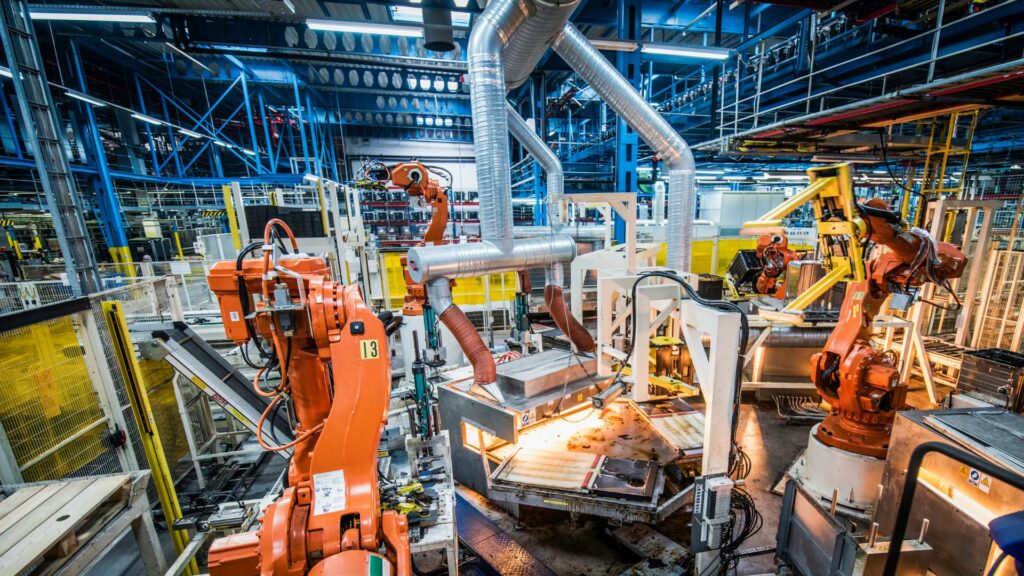In today’s rapidly evolving industrial landscape, automation plays a crucial role in enhancing efficiency, productivity, and overall operational performance. Two commonly used terms in this domain are factory automation and process automation. While they are often used interchangeably, it’s important to understand that there are distinct differences between them. This article aims to shed light on these differences and provide a comprehensive understanding of both factory automation vs. process automation.
Factory Automation
Definition and Scope
Factory automation refers to the use of various technologies, systems, and control devices to streamline and optimize operations within a manufacturing facility. It encompasses a wide range of processes, including assembly line automation, robotic systems, material handling, quality control, and more.

Key Elements
Factory automation comprises a number of crucial elements that collaborate harmoniously to achieve smooth production processes:
Control Systems: Advanced control systems are fundamental to factory automation as they oversee and regulate various production aspects, including machine speed, temperature, pressure, and other vital parameters.
Sensors and Actuators: These devices play a crucial role in collecting real-time data from the production environment and initiating necessary actions. Sensors detect alterations in temperature, pressure, proximity, and other variables, while actuators carry out physical tasks based on the received signals.
Human-Machine Interface (HMI): HMIs provide a user-friendly interface for operators and supervisors to interact with automated systems. They display vital information, receive input commands, and enable monitoring and control of the production processes.
Robotics and Machine Vision: Factory automation often incorporates robots and machine vision systems to perform tasks with precision and accuracy. Robots can handle repetitive tasks, while machine vision systems ensure quality control by inspecting products for defects.
Benefits of Factory Automation
Implementing factory automation offers numerous benefits to manufacturing companies:
Increased Efficiency: By automating repetitive and labor-intensive tasks, production processes become faster and more efficient, resulting in higher output and reduced lead times.
Improved Quality: Automation reduces the chances of human errors and inconsistencies, leading to better product quality and consistency.
Enhanced Safety: Automated systems can handle hazardous or physically demanding tasks, reducing the risk of workplace accidents and injuries.
Cost Savings: While the initial investment in automation may be significant, it can lead to long-term cost savings through improved productivity, reduced labor costs, and minimized material wastage.
Process Automation
Definition and Scope
Process automation, conversely, centers on the automation of particular processes or workflows within an organization, regardless of whether they take place in a manufacturing environment or any other industry. Its objective is to automate repetitive and rule-based tasks in order to optimize operations and enhance overall efficiency.
Key Components
Process automation encompasses the following essential components:
Workflow Management Systems: These systems serve as a platform for designing, executing, and monitoring workflows. They enable organizations to define task sequences, allocate resources, and automate decision-making processes.
Data Integration: Process automation relies on the seamless integration of data across various systems and applications. This ensures smooth information flow between departments, fostering streamlined processes and improved collaboration.
Business Rules Engine: A business rules engine empowers organizations to define and automate business rules, policies, and decision-making criteria. It ensures consistency and compliance while reducing reliance on manual intervention.
Process Monitoring and Analytics: Process automation platforms offer monitoring and analytics capabilities to track the performance of automated workflows. They provide real-time insights, identify bottlenecks, and facilitate continuous process improvement.
Benefits of Process Automation
Process automation brings several advantages to organizations across various industries:
Improved Efficiency and Accuracy: By automating repetitive tasks, organizations can reduce manual errors, accelerate process completion, and improve overall efficiency.
Enhanced Scalability: Automated processes can handle higher volumes of work without compromising quality or requiring additional resources, enabling scalability as the organization grows.
Better Compliance and Risk Management: Automation ensures adherence to predefined business rules and regulatory requirements, reducing the risk of non-compliance and associated penalties.
Resource Optimization: Process automation optimizes resource allocation, ensuring that employees can focus on higher-value tasks while mundane activities are handled by automated systems.
Conclusion
In summary, factory automation and process automation are distinct concepts that serve different purposes within organizations. Factory automation is primarily focused on streamlining manufacturing processes and optimizing production in a factory setting, while process automation aims to automate specific workflows and tasks across different industries. Both approaches offer significant benefits, including increased efficiency, improved quality, and cost savings. Understanding the differences between these two types of automation is crucial for organizations looking to enhance their operational capabilities.

